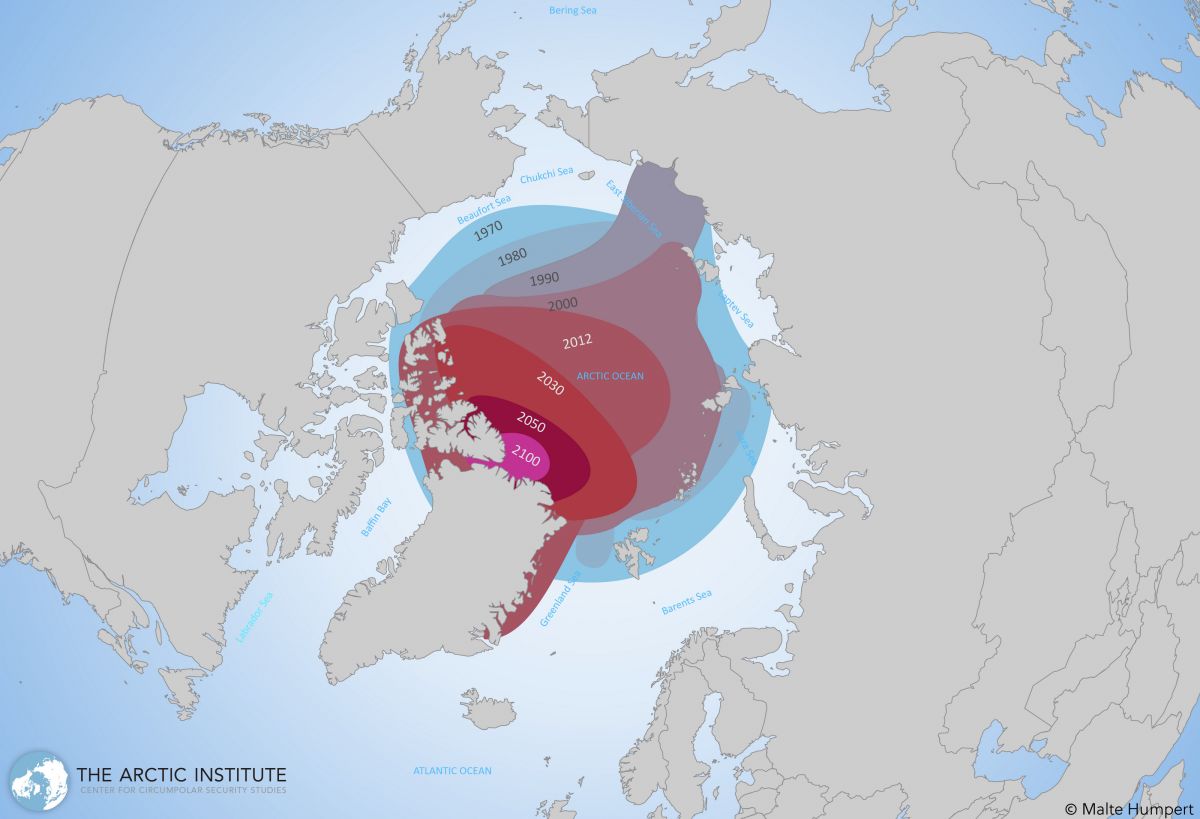Na de val van de Muur
The Arctic has always sparked our imagination. An ice-covered wasteland, remote, and hard to control. Recently, it seems to have become a place of conflict. Where Russians plant their national flag, moon-landing style. Where president Trump proposes to buy Greenland. Where climate change is painstakingly visible: its white ice melting, uncovering oil and gas resources that trigger the interest from oil magnets all over the world to drill and mine. The dominant idea is that there’s a scramble for the North Pole going on, and it’s just a matter of time before the geopolitical status quo will be shattered. But how real is this threat?
From (North) Pole of Peace to Ice-free zone
There wasn’t always a scramble for the Arctic. Duncan Depledge, political geographer, recalls how in 1987, right before the Berlin Wall fell, the image of the Arctic shifted from an unexplored ice curtain to a Pole of Peace. The seven so-called Arctic states, Canada, the Kingdom of Denmark, Finland, Iceland, Norway, Russia, Sweden and the United States all cooperated, and in the early 1990s they even formed an Arctic Council, in which decisions were made and hands were shaken. Defying all odds, for a while the Arctic was the proof that cooperation between states and the US and Russia was possible.
The logic of ‘stick a flag in it and it is yours’ went well beyond international law.
So how did we get to the point of the Arctic as a place of scramble and tensions? Depledge takes us to 2004, when an until then relatively quiet Arctic Council published a major scientific assessment in which they tried to understand how climate change impacted the Artic. What they found was worse than they thought: climate change had its effects, and it was going fast. Instead of an ice-covered Arctic, the future suddenly looked grim, and speculations of an ice-free arctic started to circulate.
Three years later, in 2007, a group of Russian explorers who were gathering data below the Arctic surface, planted their flag deep down the surface of the Arctic, reminiscent of the moon-landing or colonial victories. The reactions were furious. The logic of ‘stick a flag in it and it is yours’ went well beyond international law. “The combination of these two, a Russian invasion and an ice-free arctic, had started a chain of hyperspeculations, and the Arctic as a Pole of Peace was replaced by the Artic as a place of scramble” Depledge explains. Fear of a new Cold War, in its most literal form, suddenly re-entered the public imagination.
The Potential Arctic and the Pioneering Arctic
Depledge calls the hyperspeculation about the Arctic’s future the ‘Potential Arctic’: a possible future predicted by graphs, maps, speculations, fear and framings. But it’s lacking nuance, Depledge explains. One of the problem lies in the way the effects of climate change on the area are visualized.

Look at the image above: it is a map depicting the melting ice of the Arctic. “It shows that the melting is getting worse and not getting any better. But maps like this are deceiving,” Depledge explains. “It shows only one potential future. It doesn’t tell us how weather changes, how humans change their behavior, how the changes develop,” all factors that could influence the melting ice and its pace. It is not all bad, and we still have the power to change the future maps like this predict. We have to look at what is not being depicted on the maps, Depledge advises, factors such as politics, economic and human behavior.
There is lots to learn from the Arctic, not just to be feared.
This is just one example of how the future of the Arctic is made to look one-sided. Another example: China’s investment in the Arctic. There were some alarming reactions coming from Western media, when China started to mingle in the commercialization of the Arctic. But dig a little deeper, and it becomes clear there are more sides to it. “The indigenous people of the Arctic turned to China because their lack of access to good infrastructure and health care. They cannot live modern lives, it’s not surprising they turn to China to invest”.
But what about the Arctic as a potential gold mine for oil magnets? “The Arctic will most likely not become a huge oil and gas platform. Think of all the bad publicity and angry activists that will haunt the oil miners. It is not profitable at all”. One by one, Depledge adds nuance to the scramble for the Arctic, showing that there are different stories to tell. If we continue to look at the Arctic as a place with a predetermined future, predicted by maps, graphs and power, it's impossible to see alternative futures. This is why Depledge calls for a new way to view the Arctic, not as a 'Potential Arctic', but as the 'Pioneering Arctic': a place where new technologies to fight climate change are being used, where innovations in infrastructure and healthcare pioneer. There is more to learn from the Arctic, than to be feared.


